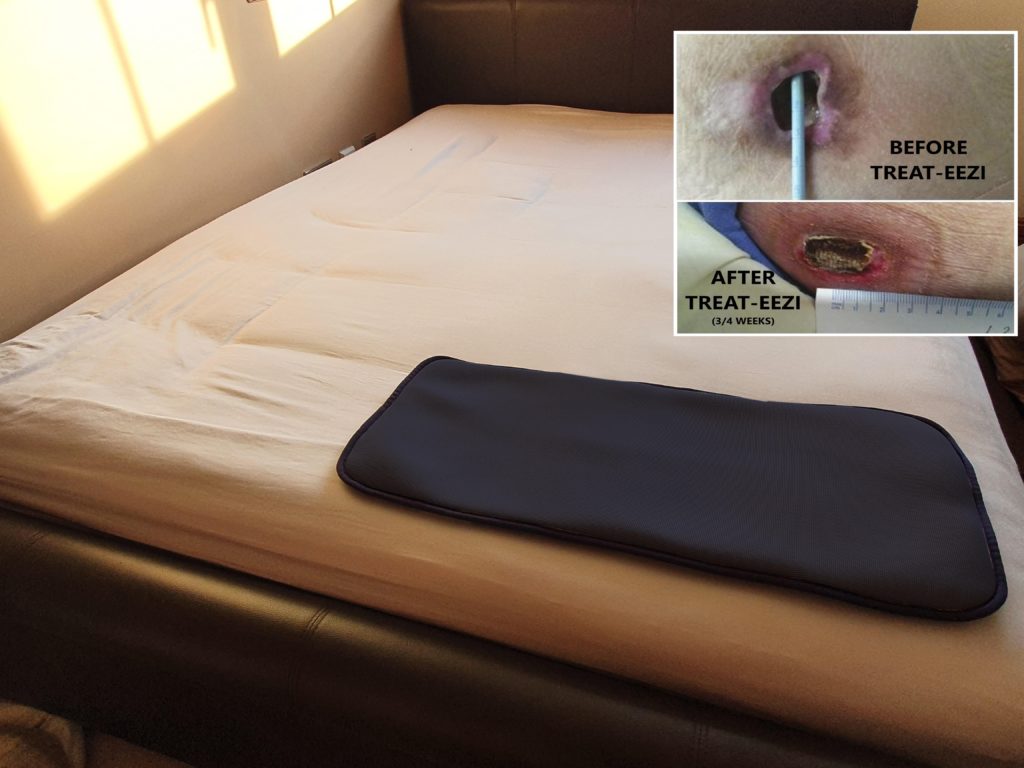Your Guide to Understanding and Treating Heel Pressure Ulcers
Heel pressure ulcers, also known as heel bed sores or heel pressure sores, are a common and painful condition that affects many individuals, particularly those with limited mobility. These ulcers can significantly impact a patient’s quality of life and require diligent care and prevention strategies to manage effectively.
We will explore what heel pressure ulcers are, their causes, the experiences for patients, and how they can be treated and prevented. One innovative solution in treating heel pressure ulcers is the use of heel rests, such as those offered by Dan Medica South.
What Are Heel Pressure Ulcers?
Heel pressure ulcers are localised injuries to the skin and underlying tissue, usually over a bony area like the heel. They occur due to prolonged pressure and/or friction. These ulcers can range from mild reddening of the skin to severe open wounds that expose bone and muscle. The development of heel pressure ulcers is a significant concern, especially in bed bound patients, the elderly, and individuals with chronic conditions such as diabetes or vascular disease.
Causes of Heel Pressure Ulcers
The primary cause of heel pressure ulcers is sustained pressure that restricts blood flow to the tissues, leading to tissue death and ulceration. Several factors contribute to this condition:
- Immobility: Patients who are bed bound or have limited mobility are at high risk.
- Poor Circulation: Conditions such as diabetes and peripheral artery disease can impair blood flow.
- Friction and Shearing: Movements that cause the skin to rub against surfaces or drag can damage the skin.
- Moisture: Excessive moisture from sweat or incontinence can weaken the skin, making it more susceptible to injury.
What a Patient Experiences
The experience of heel pressure ulcers can be incredibly distressing. Patients often suffer from severe pain, which can be exacerbated by movement. The ulcers can lead to infection, prolonging the healing process and potentially leading to further complications. The emotional and psychological impact is also significant, as patients may feel helpless and frustrated by their condition.
Treating Heel Pressure Ulcers
Effective treatment of heel pressure ulcers involves a multi-faceted approach. Here are some key strategies:
- Pressure Relief: Reducing pressure on the affected area is crucial. Heel rests, like those from Dan Medica South, are designed to lift the heel off the bed, distributing pressure evenly and preventing further damage.
- Wound Care: Proper wound care is essential. This includes cleaning the ulcer, applying appropriate dressings, and monitoring for signs of infection.
- Nutrition: Good nutrition supports healing. A diet rich in protein, vitamins, and minerals can promote tissue repair.
- Repositioning: Regularly changing the patient’s position helps to redistribute pressure and reduce the risk of new ulcers forming.
- Hydration and Skin Care: Keeping the skin clean and moisturised helps maintain its integrity.
Prevention of Heel Pressure Ulcers
Prevention is always better than cure, and several measures can be taken to prevent heel pressure ulcers:
- Use of Heel Rests: You can significantly reduce the risk of ulcer development by offloading pressure from the heel. Dan Medica South offers specialised heel rests
- Regular Repositioning: Ensuring that patients are repositioned regularly can help prevent prolonged pressure.
- Skin Inspections: Regularly checking the skin for early signs of pressure damage allows for timely intervention.
Heel pressure ulcers are a serious and painful condition that requires comprehensive care and prevention strategies. By understanding the causes and patient experiences associated with these ulcers, caregivers and medical professionals can better support those at risk.
Treating heel pressure ulcers involves a combination of pressure relief, wound care, nutrition, and regular repositioning. Prevention, through tools such as the heel rests from Dan Medica South, plays a crucial role in managing and reducing the incidence of these debilitating ulcers. By prioritising these approaches, we can enhance patient outcomes and improve their quality of life.
Find out more about our heel rests and how they might be able to help you.


